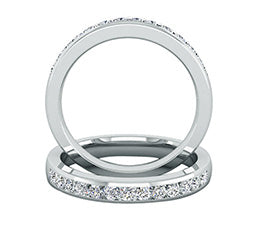-
DELIGHTFUL WAVY DIAMOND RING
Regular price From $2,400.00 USDRegular priceUnit price per -
LUXURY WOMEN’S DIAMOND WEDDING BAND
Regular price From $1,300.00 USDRegular priceUnit price per -
CHANNEL SET DIAMOND RING
Regular price From $1,380.00 USDRegular priceUnit price per -
ELEGANT TEN STONE DIAMOND RING
Regular price From $1,360.00 USDRegular priceUnit price per -
CLASSIC SEMI-MOUNT PAVÉ DIAMOND RING
Regular price From $1,530.00 USDRegular priceUnit price per -
DAZZLING MILGRAIN THREE-SIDED DIAMOND RING
Regular price From $2,800.00 USDRegular priceUnit price per -
Semi Mount Women 22 Diamond Band
Regular price From $850.00 USDRegular priceUnit price per -
Semi-Mount Pavé Setting Diamond Ring
Regular price From $970.00 USDRegular priceUnit price per -
FLORAL STYLE WEDDING BAND
Regular price From $970.00 USDRegular priceUnit price per -
SIMPLY CLASSIC MEN’S RING
Regular price From $750.00 USDRegular priceUnit price per -
TWINED SHANK DIAMOND WEDDING RING
Regular price From $1,950.00 USDRegular priceUnit price per
Welcome to our store


















